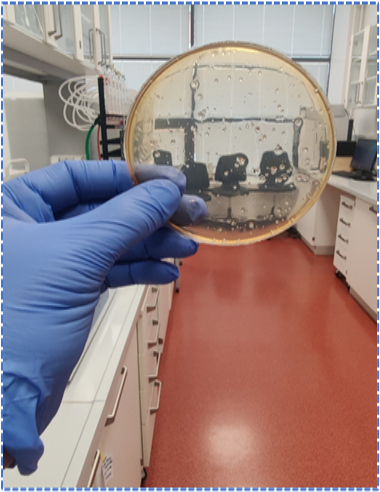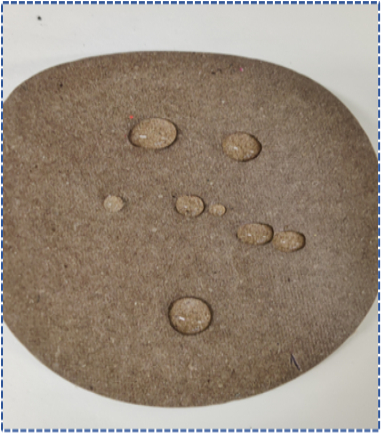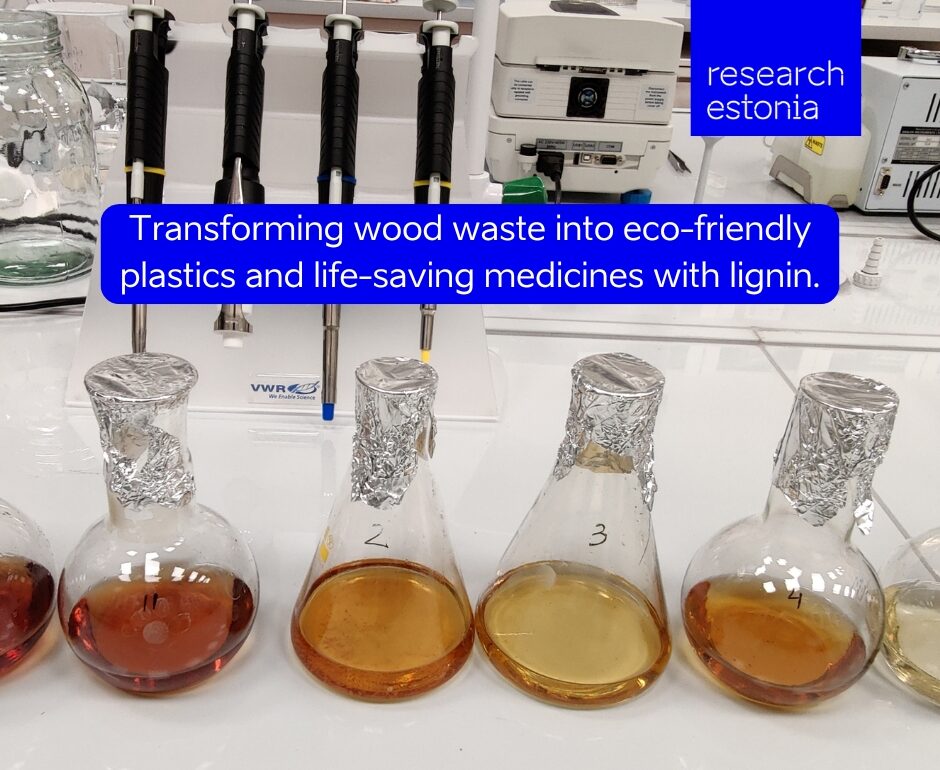Every year, over 80 000 tons of plastic waste is generated in Estonia, yet only a small fraction is recycled. At the same time, a significant amount of wood waste is burned for heat, disregarding its potential value. Researchers at the Estonian University of Life Sciences have now discovered a way to sustainably produce bio-based plastics and life-saving medicines from lignin, a key component found in lignocellulosic biomass (LCB).
Lignocellulosic biomass, which includes materials like grasses, sawdust, waste furniture, and agricultural residues, primarily consists of cellulose, hemicellulose, and lignin. In wood, for example, cellulose makes up nearly half of the mass, hemicellulose one-fifth, and lignin 27–30%. Traditionally, the pulp industry focuses on extracting cellulose for paper production, while often burning hemicellulose and lignin as black liquor for energy. As a result, lignin has long been considered a secondary byproduct, making it challenging to find practical applications.
However, my colleagues and I at the Estonian University of Life Sciences view lignin as a potential game-changer. We believe it can replace valuable materials currently derived from fossil fuels, such as plastics, rubber, and adhesives. Professor Timo Kikas and Senior Researcher Sabarathinam Shanmugam, along with myself, have developed new green solvents, specifically ionic liquids, to efficiently extract and recycle lignin from wood waste. These solvents allow us to transform lignin into coating materials that can replace plastic in packaging and create platform chemicals essential for pharmaceuticals.

Photo: Sharib Khan.
To appreciate the significance of this breakthrough, it’s important to understand the complex nature of lignin. This aromatic polymer, which forms part of the cell walls in plants, provides structural integrity and protects wood from degradation. When industries extract lignin after cellulose removal, as they commonly do, the process complicates its further use. Therefore, it’s essential to first sustainably extract lignin , preserving its structure for high-value applications.
This is where our green solvent system comes in. We’ve developed a method using low-cost protic ionic liquids (PILs), also known as liquid salts, which offer a sustainable alternative for lignin extraction. These recyclable PILs offer a more environmentally-friendly alternative to the harsh chemicals that traditional pulping methods use. By using PILs, we can extract larger amounts of lignin from various LCBs, enabling us to use lignin in advanced applications like pharmaceuticals and bioplastics.
PILs are remarkable salts that remain in liquid form at room temperature, unlike conventional table salt. PILs consist of a proton donor Brønsted acid and a proton acceptor Brønsted base. Their unique properties, such as the ability to form hydrogen bonds, high ionic conductivity, and low volatility, make them ideal for dissolving lignin without requiring high temperatures or pressures. Additionally, PILs offer less toxicity and better recyclability than traditional solvents, and we can reuse them multiple times, reducing the environmental impact of the lignin extraction process.

Photo: Sharib Khan.
Currently, I’m exploring how to integrate PILs with other green technologies, such as enzymatic depolymerization of lignin. By leveraging specialized enzymes, we can break down lignin into smaller, more usable components, further enhancing the efficiency and sustainability of lignin valorization. This approach aims to reduce processing times, lower energy consumption, and improve the overall yield and quality of lignin
The potential applications for lignin extracted using PILs and enzymatic depolymerization are vast. Its transformation into valuable platform chemicals paves the way for producing essential molecules used in drug development and other medical applications. By extracting lignin in larger quantities, we could drastically reduce plastic waste and our reliance on fossil fuels, This transformation would turn wood waste into high-value products instead of simply burning it. This shift would enable sustainable solutions with far-reaching environmental benefits.
In summary, by developing sustainable methods to extract and utilize lignin, we are not only addressing environmental issues but also unlocking the potential for eco-friendly plastics and life-saving medicines. These advancements represent a promising step towards a more sustainable future, where waste is transformed into valuable resources, reducing our reliance on fossil fuels and minimizing environmental harm.

Author of this article is Sharib Khan. Editor Jaan-Juhan Oidermaa. Article written for the contest “Science in 3 minutes” organised by Estonian Academy of Sciences and The Estonian Young Academy of Sciences (EYAS). Main sponsor of the competition is Inclusive Financial Technology Foundation.
If this wooden tale has you stumped for more, don’t leaf just yet — read more about The new life of alder and aspen wood – a breakthrough by scientists from Estonia!
 Back
Back



